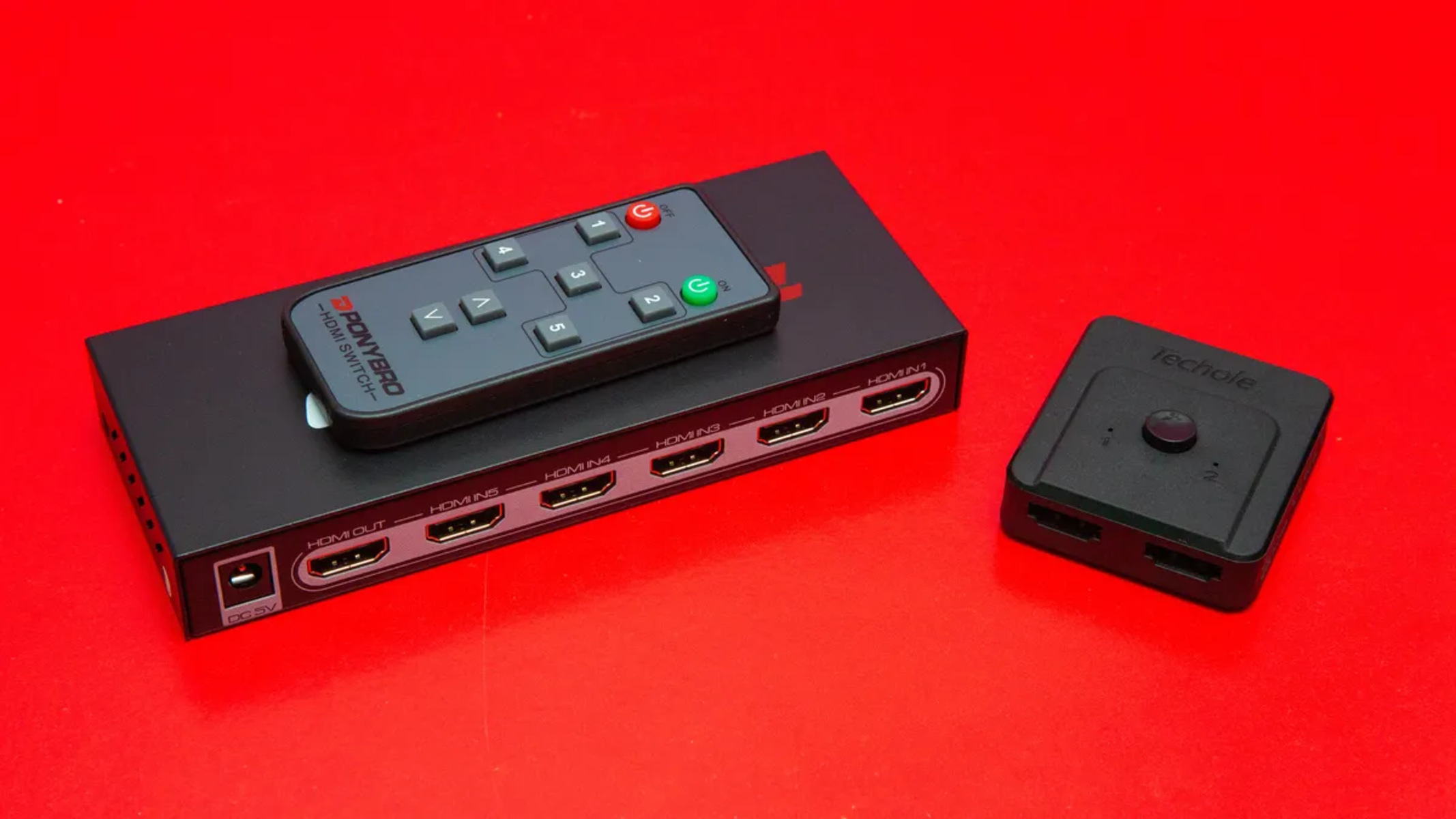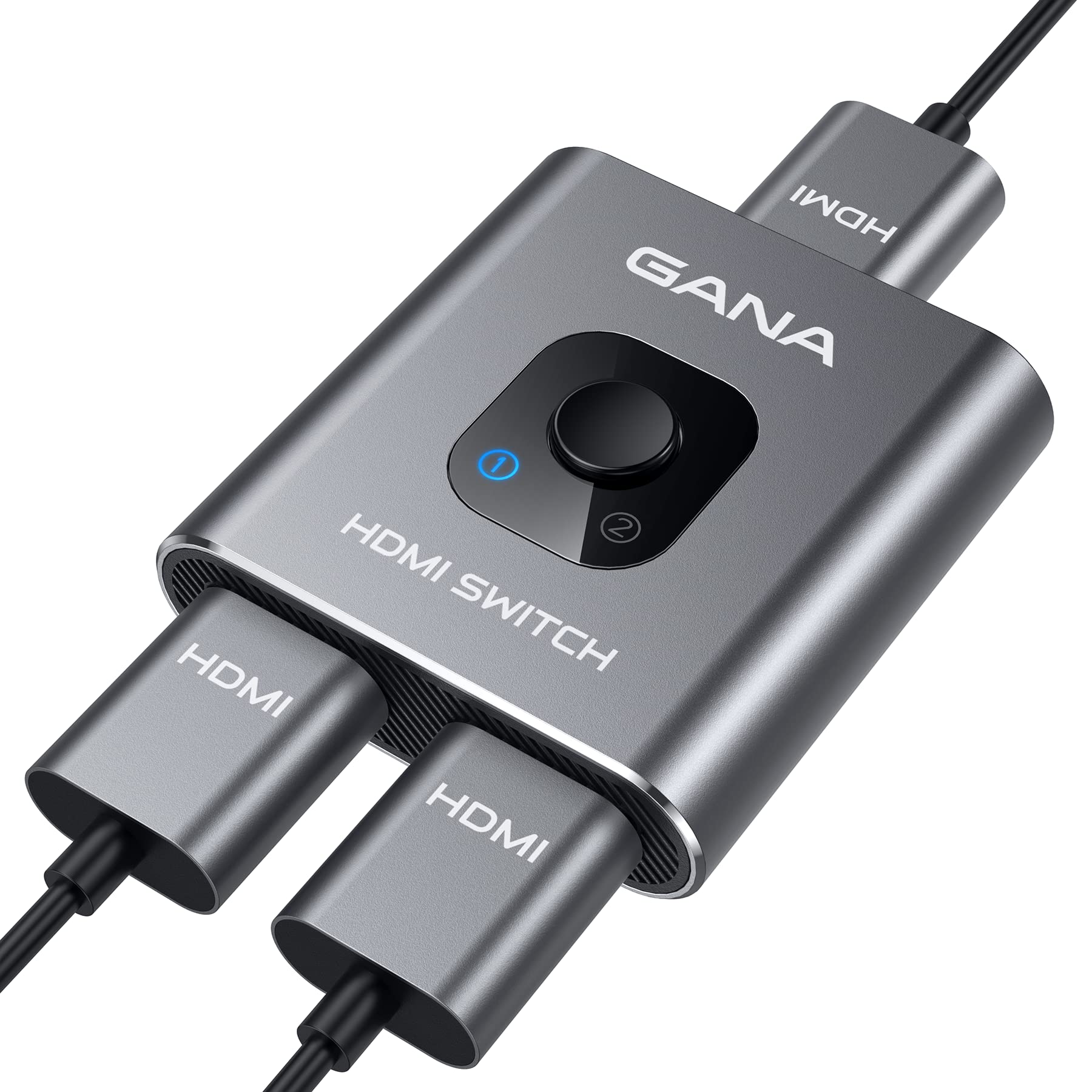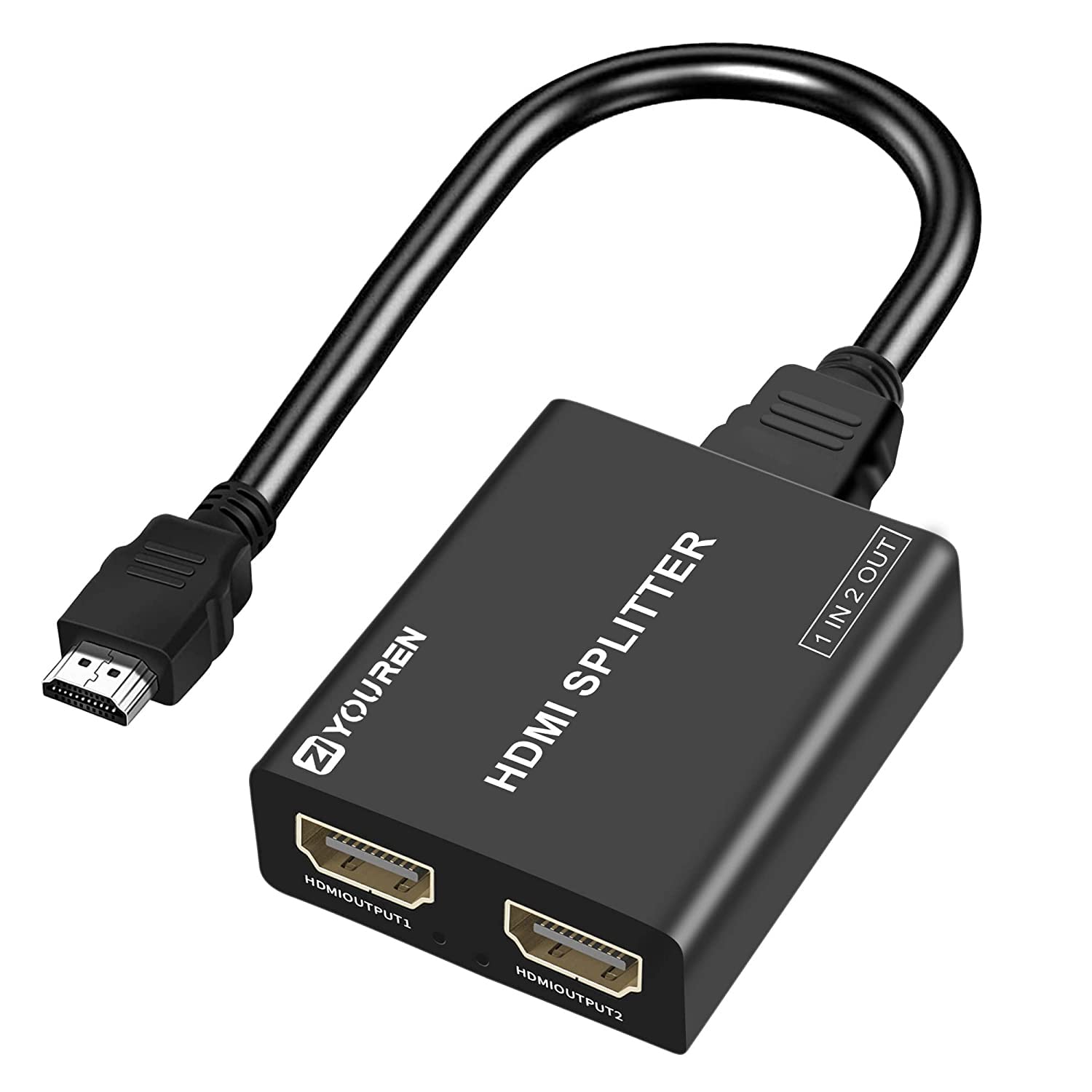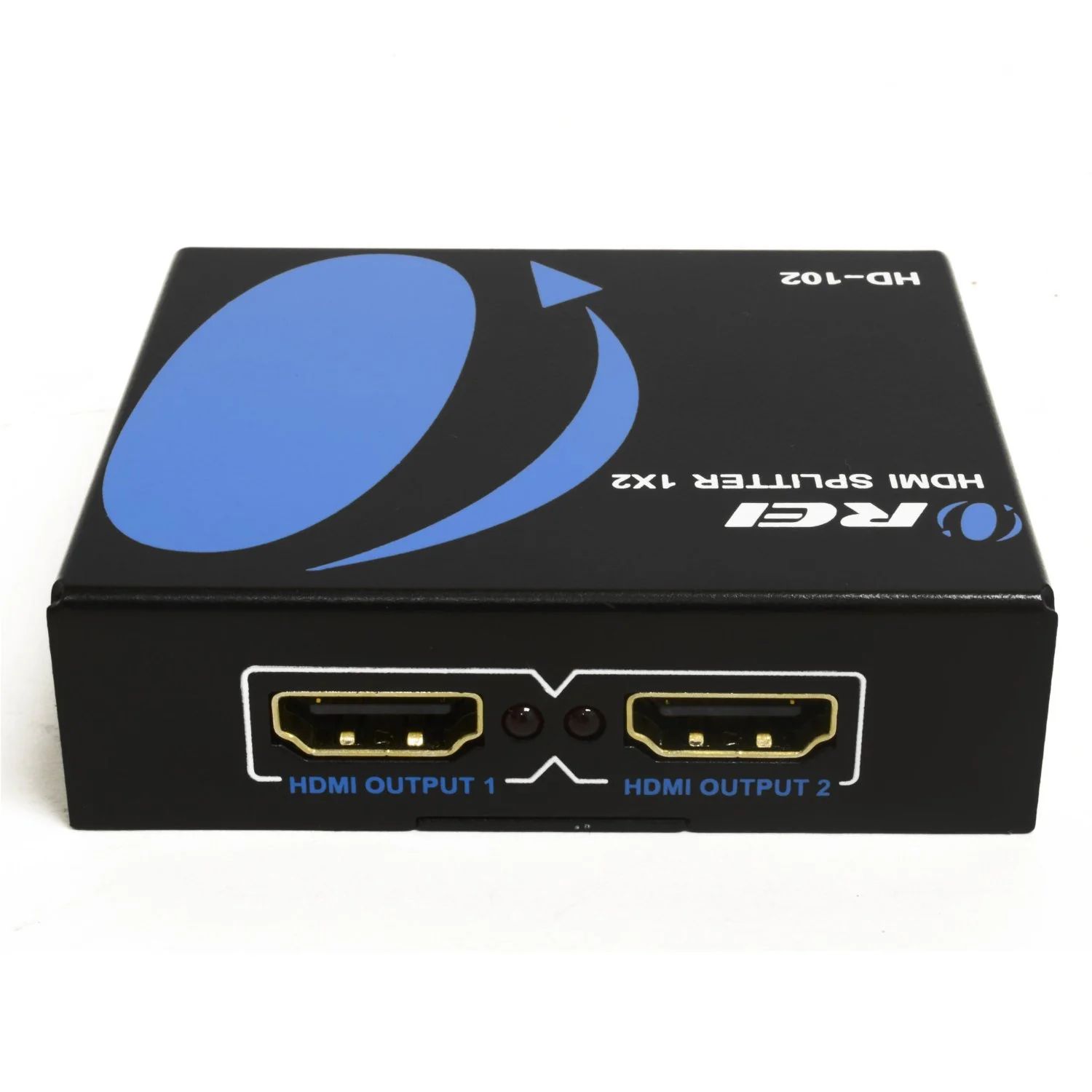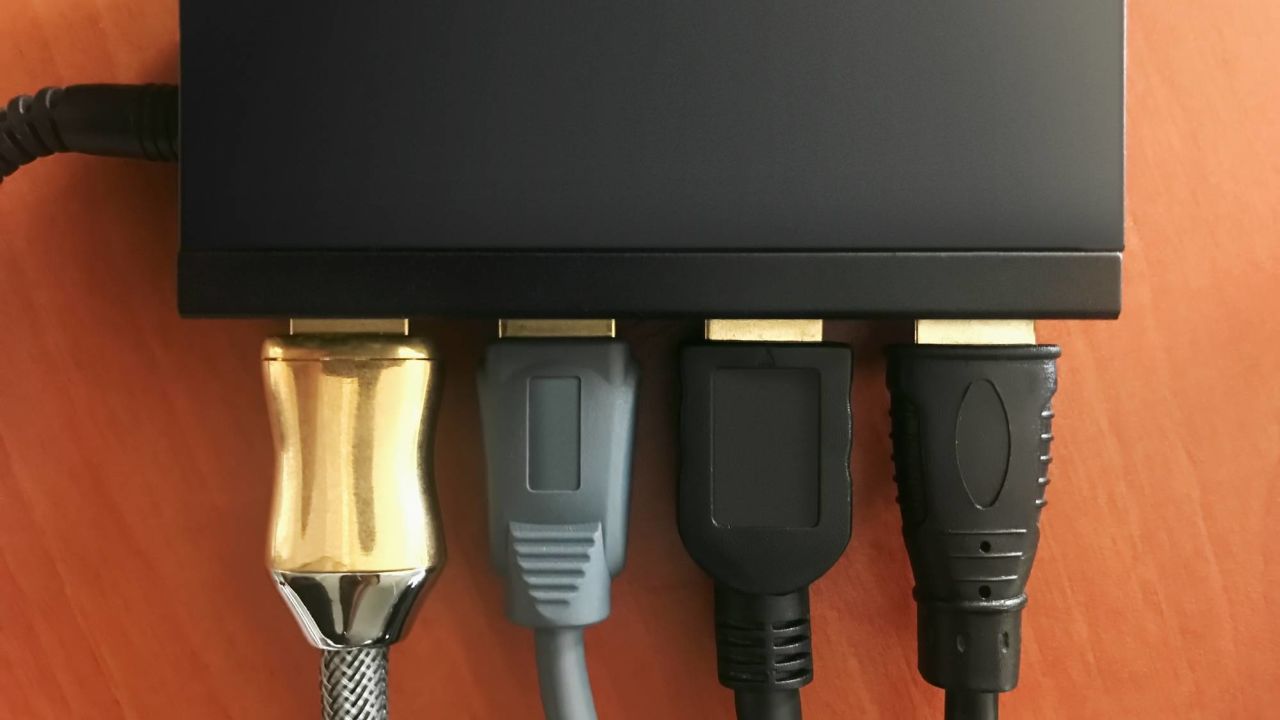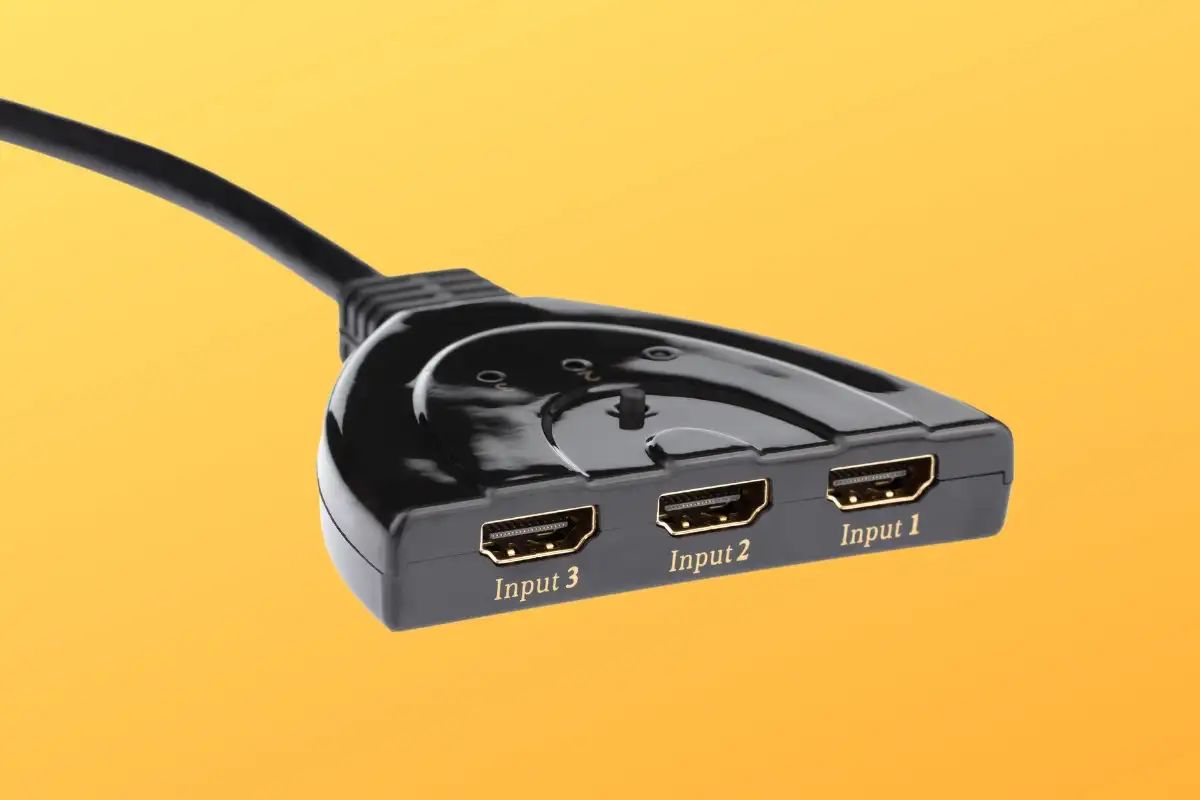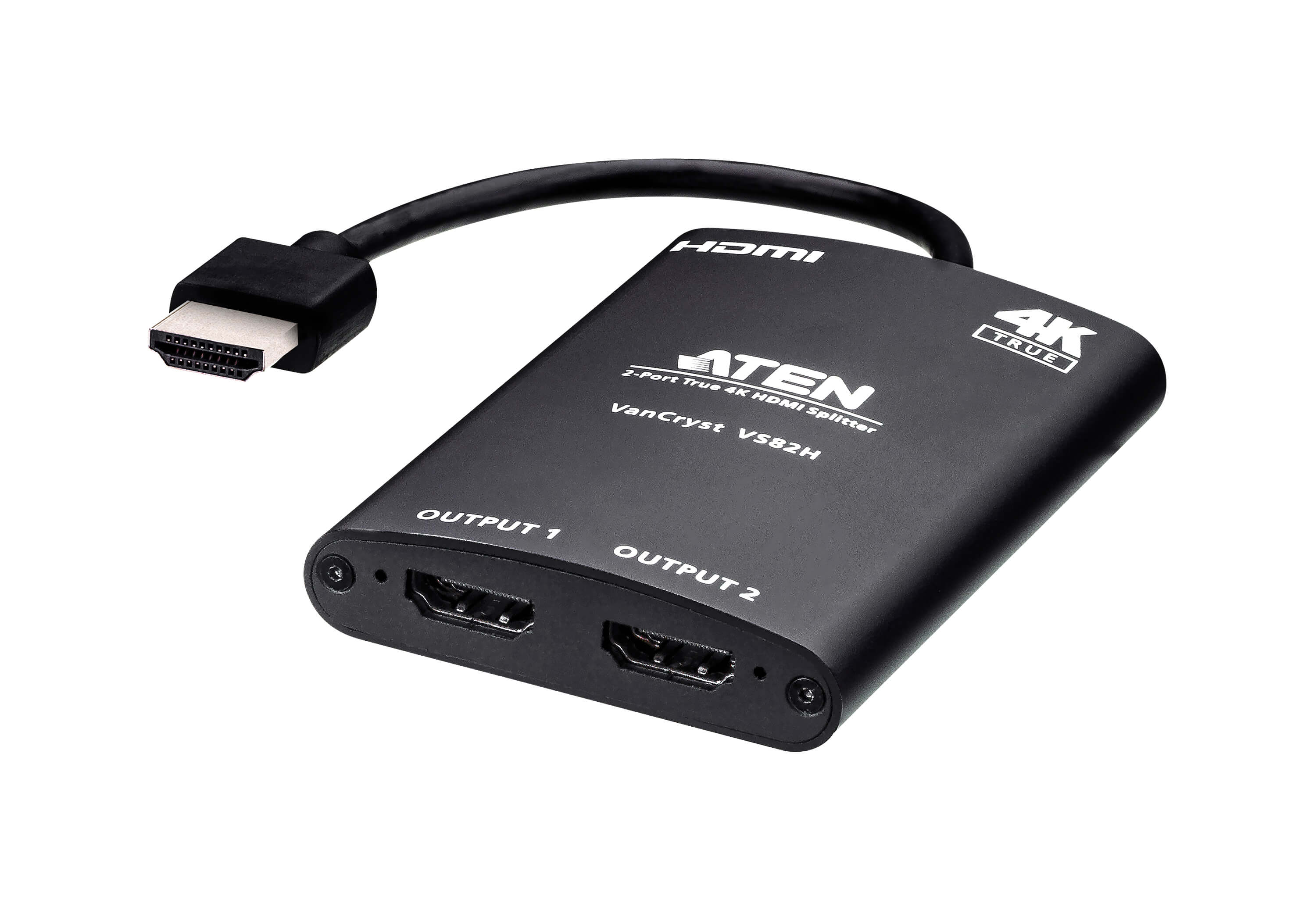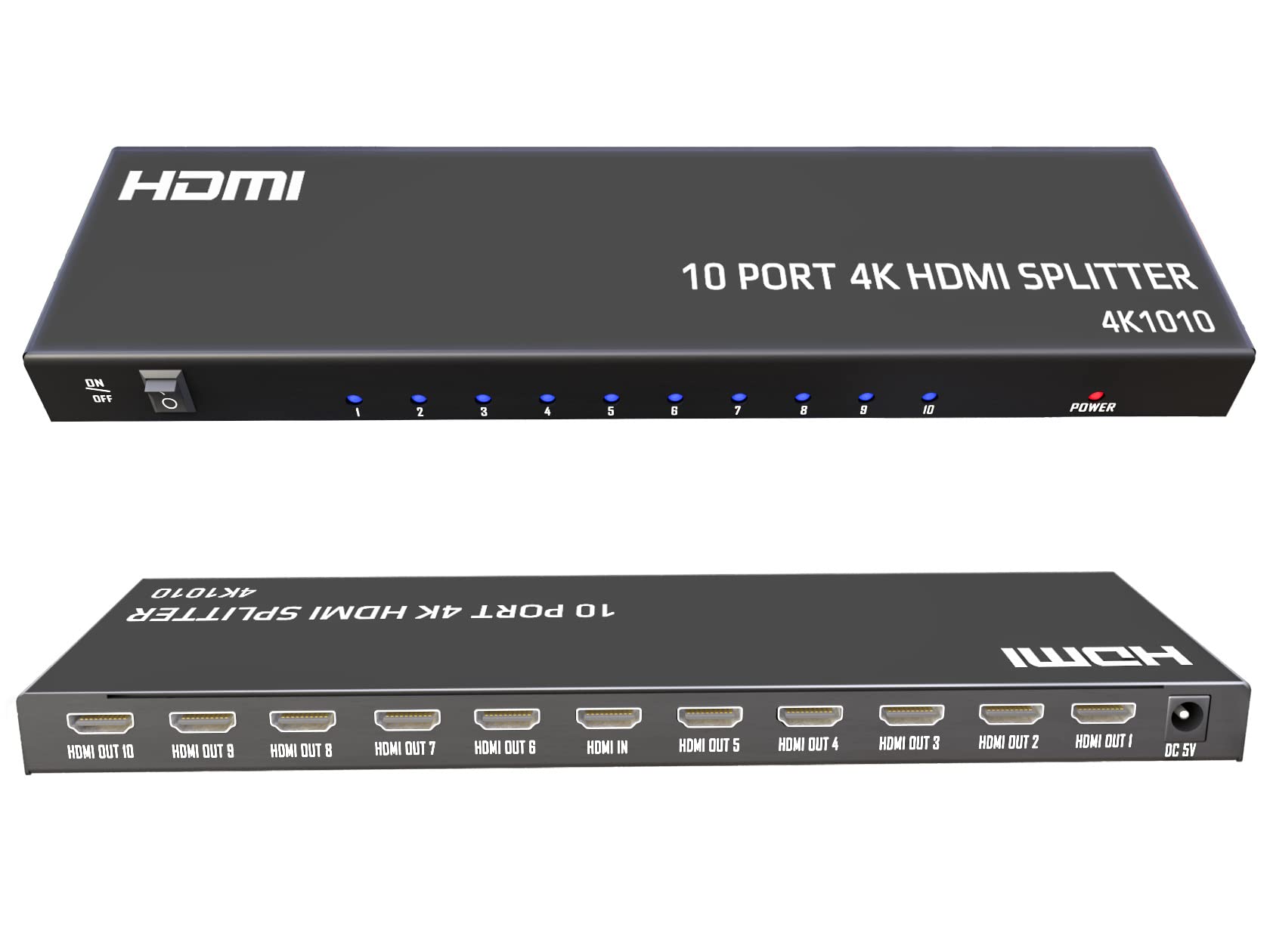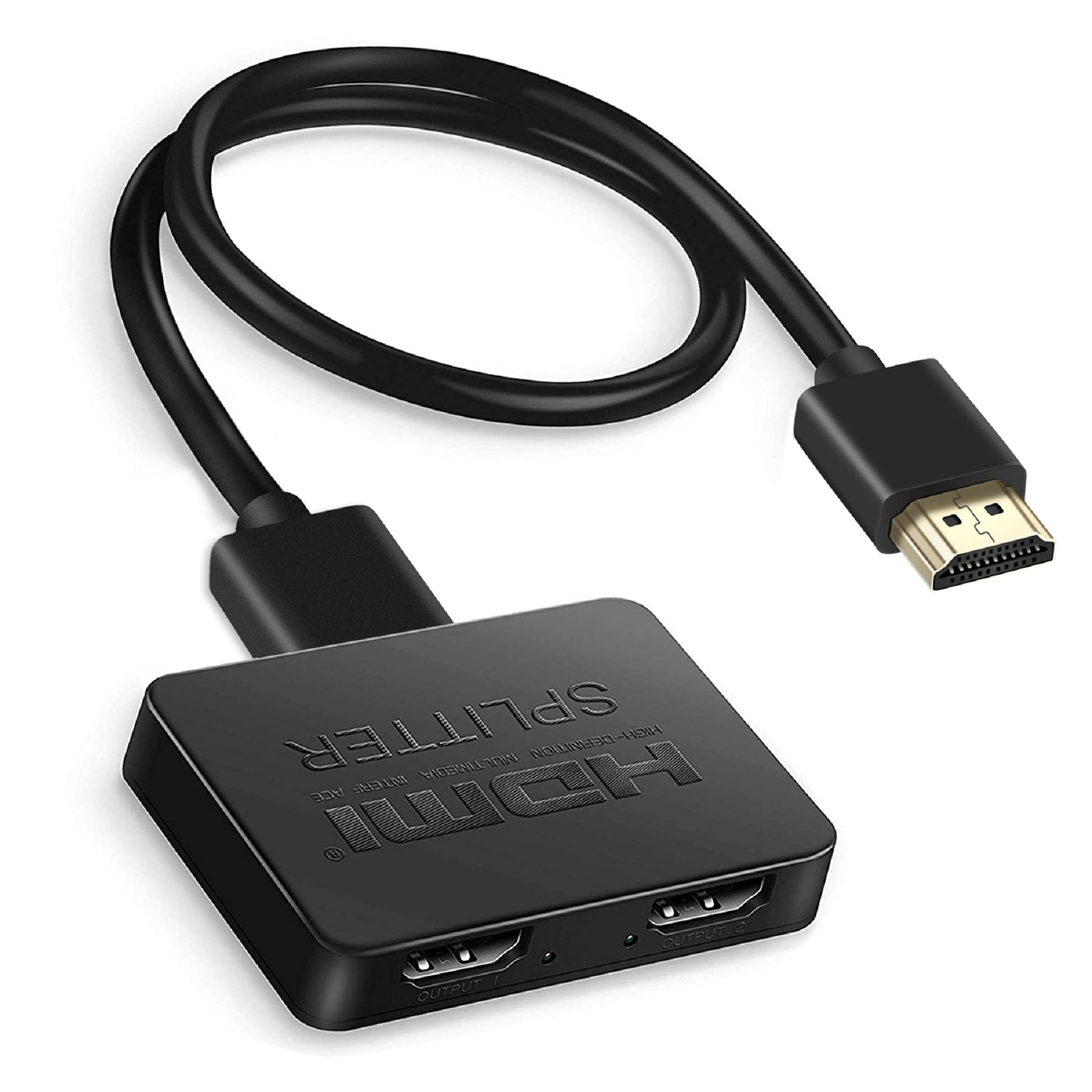Introduction
Welcome to the world of HDMI splitters! If you’re someone who loves to enjoy multimedia content on multiple devices simultaneously, then you’ve come to the right place. In this article, we’ll delve into the fascinating realm of HDMI splitters and explore how they work.
Before we plunge into the technical details, let’s clarify what exactly an HDMI splitter is. Simply put, an HDMI splitter is a device that allows you to connect a single HDMI source, such as a Blu-ray player or gaming console, to multiple display devices, such as TVs or monitors. With an HDMI splitter, you can watch your favorite movies, play video games, or display presentations on multiple screens simultaneously.
An HDMI splitter works by taking the digital signal from the input device and duplicating it across multiple output devices. This means that you can enjoy the same high-quality audio and video signals on multiple screens without any loss in quality. Whether you’re hosting a movie night with friends, giving a presentation in a conference room, or just want to watch your favorite TV show in different rooms, an HDMI splitter can make it possible.
Now that we have a basic understanding of what an HDMI splitter is and how it functions, let’s take a closer look at the various types of HDMI splitters available in the market. From simple 1×2 splitters to more advanced models with multiple outputs and additional features, there’s a wide range of options to choose from.
In the next section, we’ll explore the different types of HDMI splitters and help you identify the one that best suits your needs. So, if you’re ready to dive deeper and unravel the secrets behind the functionality of HDMI splitters, let’s continue our journey together!
What is an HDMI splitter?
An HDMI splitter is a device designed to distribute a single HDMI input signal to multiple output devices. It allows you to connect one HDMI source, such as a Blu-ray player or gaming console, and display the content on multiple screens simultaneously. With an HDMI splitter, you can enjoy your favorite movies, TV shows, and digital content on multiple displays, without the need for separate source devices for each screen.
Typically, HDMI splitters come with one HDMI input port and multiple output ports. The most common type is the 1×2 splitter, which has one input and two outputs, but there are also splitters with more outputs available. The input signal is received through the HDMI input port and then duplicated across all the output ports. This means that you can connect your HDMI source to two, four, or even more screens and enjoy the same audio and video content on each display.
HDMI splitters are incredibly versatile and can be used in various settings. They are commonly used in home theater systems, where you can connect your Blu-ray player or media streaming device to multiple TVs or projectors. You can also find HDMI splitters in office environments, where they are used for presentations and displaying content on multiple monitors.
It’s important to note that HDMI splitters support both audio and video signals. This means that you can experience high-quality digital audio, such as Dolby Digital or DTS, along with the crisp and vivid video provided by HDMI technology. Whether you’re a multimedia enthusiast, a gamer, or a business professional, an HDMI splitter can enhance your viewing experience and make it easier to connect and enjoy your devices.
Now that you have a clear understanding of what an HDMI splitter is and its purpose, let’s delve into the mechanics behind how an HDMI splitter actually works. In the next section, we will explore the intricacies of signal distribution and how the splitter ensures that the audio and video signals are replicated accurately on all connected devices.
How does an HDMI splitter work?
An HDMI splitter functions by taking the HDMI input signal from a source device and duplicating it across multiple output devices. The process involves several steps to ensure that the audio and video signals are replicated accurately on all connected screens.
When you connect an HDMI source, such as a Blu-ray player or game console, to the input port of an HDMI splitter, the device first detects the incoming signal. The splitter then utilizes internal circuitry to amplify and replicate the signal to match the number of output ports it has.
The replicated signal is then distributed to all the output ports, allowing you to connect multiple displays, such as TVs or monitors, to the splitter. Each output port receives an identical copy of the original input signal, which means that all connected screens will display the same content simultaneously.
One key aspect of HDMI splitters is that they support the maximum resolution and refresh rate of the input source. This means that if your Blu-ray player is capable of outputting 4K resolution at 60Hz, all connected displays will receive the same high-resolution signal. The splitter doesn’t degrade the quality of the signal; it simply duplicates it to ensure consistency across all screens.
HDMI splitters also support various audio formats, including Dolby Digital, DTS, and PCM. The splitter automatically delivers the correct audio signal to each connected display to maintain audio synchronization with the video content.
It’s important to note that not all HDMI splitters are created equal. Some splitters may have limitations in terms of the maximum resolution or refresh rate they can handle, while others may offer additional features, such as built-in signal amplification or EDID management to optimize compatibility with different display devices.
Overall, an HDMI splitter simplifies the process of connecting multiple displays to a single HDMI source. It ensures that you can enjoy the same high-quality audio and video content on all connected screens without any loss in signal quality or synchronization issues.
In the next section, we will explore the different types of HDMI splitters available in the market, so you can choose the one that best fits your specific needs and requirements.
Types of HDMI splitters
There are several different types of HDMI splitters available in the market, each with its own features and specifications. Understanding the various types can help you choose the right HDMI splitter for your specific needs. Let’s take a look at some of the common types:
1. 1×2 HDMI Splitter: This is the most basic type of splitter, featuring one input and two output ports. It allows you to connect a single HDMI source, such as a DVD player or gaming console, to two displays simultaneously. This type of splitter is commonly used for home entertainment setups or small-scale presentations.
2. 1×4 HDMI Splitter: With one input and four output ports, this type of HDMI splitter provides the ability to connect a single source to up to four displays. It’s ideal for larger home theater systems or professional installations where multiple screens are required.
3. 1×8 or 1×16 HDMI Splitter: These splitters are designed for more complex setups that require multiple displays. With one input and eight or sixteen output ports, they are commonly used in commercial environments like conference rooms, retail displays, or digital signage installations.
4. Matrix HDMI Splitter: Unlike the previous types, a matrix HDMI splitter offers multiple input and output ports, allowing you to switch between different sources and displays. For instance, a matrix splitter with 4×2 configuration enables you to connect up to four sources and two displays, and then choose which source is displayed on each screen.
5. Wireless HDMI Splitter: This type of splitter eliminates the need for physical cables by utilizing wireless transmission technology. It allows you to transmit the HDMI signal to multiple displays without the hassle of extensive cable management. Wireless HDMI splitters are convenient for setups where cables are impractical or when you want to place your displays in different locations.
6. Powered HDMI Splitter: Some HDMI splitters require external power to ensure optimal performance, especially when splitting the signal to multiple output ports. Powered HDMI splitters come with their own power supply, providing the necessary voltage to maintain signal integrity and prevent potential signal degradation.
When choosing an HDMI splitter, consider the number of output ports you require, the resolution and refresh rate you need, and any additional features that might enhance your setup. It’s also important to check compatibility with your HDMI source and display devices to ensure seamless operation.
Now that you have a better understanding of the different types of HDMI splitters available, let’s explore the benefits of using an HDMI splitter in the next section.
Benefits of using an HDMI splitter
Using an HDMI splitter offers several benefits that can enhance your viewing experience and simplify your multimedia setup. Let’s delve into some of the advantages of using an HDMI splitter:
1. Simultaneous Display: One of the primary advantages of an HDMI splitter is the ability to display the same content on multiple screens simultaneously. Whether you’re hosting a movie night with friends or conducting a business presentation, an HDMI splitter allows you to share the same audio and video signals across multiple displays without the need for separate source devices.
2. Cost-Effective Solution: Instead of purchasing multiple source devices for each display, an HDMI splitter provides a cost-effective solution to connect multiple screens to a single source. This can save you money while still enjoying the same high-quality content on all connected displays.
3. Convenience and Versatility: With an HDMI splitter, you can easily connect and switch between different screens, making it convenient for various applications. Whether you want to watch a movie in different rooms of your home or display content on multiple monitors in an office setting, an HDMI splitter offers versatility and flexibility.
4. High-Quality Audio and Video: HDMI splitters support high-quality audio and video signals, ensuring that you receive the best possible audiovisual experience on all connected displays. You can enjoy crystal-clear visuals and immersive sound without any degradation in quality.
5. Easy Setup: Setting up an HDMI splitter is straightforward and user-friendly. Simply connect your HDMI source device to the input port of the splitter and then connect the output ports to the respective displays. No complicated configurations or additional software installations are required.
6. Space-Saving Solution: An HDMI splitter eliminates the need for multiple source devices, reducing cable clutter and saving space. Instead of having multiple devices connected separately to each display, you can streamline your setup with a single source connected to the HDMI splitter.
7. Enhanced Viewing Experience: Whether you’re enjoying a movie with friends or playing video games on multiple screens, an HDMI splitter enhances your viewing experience by providing a seamless, synchronized display across all connected devices. It creates a more immersive and engaging visual experience.
These are just a few of the many benefits that an HDMI splitter offers. The specific advantages you’ll experience will depend on your unique needs and usage scenarios. With the right HDMI splitter, you can elevate your multimedia setup and enjoy the convenience and flexibility of multiple displays.
Next, we’ll delve into the steps of connecting and setting up an HDMI splitter so you can start enjoying its benefits right away.
How to connect and set up an HDMI splitter
Setting up an HDMI splitter is a straightforward process that anyone can do. Follow these steps to connect and set up your HDMI splitter:
1. Identify the ports: Begin by identifying the HDMI input and output ports on the splitter. The input port is where you connect your HDMI source device, such as a Blu-ray player or gaming console. The output ports are where you connect the HDMI cables that lead to your displays.
2. Connect the HDMI source device: Take an HDMI cable and connect one end to the HDMI output port of your source device. Then, connect the other end of the cable to the HDMI input port on the splitter. Ensure a secure and proper connection.
3. Connect the displays: Take an HDMI cable for each display you want to connect and connect one end to the HDMI output port of the splitter. Connect the other end of each HDMI cable to the HDMI input port on the respective display. Repeat this step for each display you wish to connect.
4. Power on the devices: If your HDMI splitter requires external power, ensure that it is connected to a power source. Power on your HDMI source device and all the connected displays. Make sure that all the devices are powered on before proceeding to the next step.
5. Test the setup: With all the connections in place and the devices powered on, test your setup by playing a video or displaying content on your HDMI source device. You should see the same content displayed on all connected displays simultaneously. If you don’t, double-check the connections and ensure that the HDMI cables are securely inserted.
6. Adjust settings if necessary: Depending on your specific HDMI splitter model, there may be additional settings or features that you can adjust to optimize your setup. This may include options for audio output, resolution settings, or EDID management. Refer to the user manual of your HDMI splitter for any customization options that you can explore.
That’s it! You have successfully connected and set up your HDMI splitter. Now you can enjoy the same audio and video content on multiple displays simultaneously, allowing you to create a more immersive and shared viewing experience.
Remember, when connecting and disconnecting HDMI cables, it’s important to handle them with care and avoid forcefully bending or twisting them. This will prevent any damage to the cables or the ports of the HDMI devices.
In the next section, we’ll address some frequently asked questions about HDMI splitters to further enhance your understanding of this versatile device.
Frequently Asked Questions about HDMI Splitters
Here are some common questions that people often have about HDMI splitters:
Q: Can I use an HDMI splitter to extend my display to multiple screens?
A: No, an HDMI splitter simply duplicates the same content to multiple screens. If you want to extend your display to multiple screens and have independent content on each screen, you would need an HDMI splitter with a built-in video wall function or a separate video splitter or graphics card.
Q: Can I use an HDMI splitter with different resolution displays?
A: Yes, most HDMI splitters support different resolutions. However, the output resolution will be the same on all connected displays. It is recommended to use displays with the same or similar resolutions for the best visual experience.
Q: Can I use an HDMI splitter with different cable lengths?
A: Yes, you can use HDMI cables of different lengths with an HDMI splitter. However, it is advisable to use cables of similar lengths to ensure the best signal quality across all connected displays. Long HDMI cable lengths may lead to signal degradation.
Q: Can I daisy chain HDMI splitters to connect more displays?
A: It is generally not recommended to daisy chain HDMI splitters as it can degrade the signal quality. Each HDMI splitter has its limits in terms of the number of displays it can support. If you need to connect more displays, look for a splitter with more output ports or consider using a matrix HDMI splitter.
Q: Can I connect an HDMI splitter to a non-HDMI source device?
A: No, HDMI splitters are specific to HDMI source devices. They are designed to work with HDMI signals, so you won’t be able to connect a non-HDMI source device directly to an HDMI splitter. However, there may be alternative solutions available depending on your specific setup requirements.
Q: Can I control which display shows the content when using an HDMI splitter?
A: No, with a regular HDMI splitter, all connected displays will show the same content simultaneously. If you need to control individual displays or switch between different sources and displays, you would need a matrix HDMI splitter or a separate switching device.
Q: Can I use an HDMI splitter to split audio signals only?
A: No, HDMI splitters are designed to split both audio and video signals together. If you only need to split audio signals, you can consider using audio splitters or audio distribution amplifiers instead.
These are just a few of the common questions that arise when it comes to HDMI splitters. If you have any specific queries or concerns about your particular setup, it’s always a good idea to refer to the user manual of your HDMI splitter or consult the manufacturer’s customer support.
With this knowledge, you’re well-equipped to make informed decisions when it comes to choosing, connecting, and using an HDMI splitter.
Conclusion
HDMI splitters are powerful devices that allow you to connect a single HDMI source to multiple displays, enabling simultaneous viewing of the same audio and video content. Whether you’re looking to enhance your home theater, simplify your multimedia setup, or improve your business presentations, an HDMI splitter provides a convenient and cost-effective solution.
In this article, we explored the concept of HDMI splitters, understanding how they work and the various types available. We learned that HDMI splitters duplicate the input signal to multiple output devices, ensuring the same high-quality audio and video experience across all connected displays.
We discussed the benefits of using an HDMI splitter, such as simultaneous display, cost-effectiveness, versatility, and enhanced viewing experience. We also provided a step-by-step guide on how to connect and set up an HDMI splitter, making the process simple and convenient for anyone.
Furthermore, we addressed frequently asked questions to address common concerns and provide clarification on different aspects of HDMI splitters, increasing your understanding and confidence in using these devices.
By now, you should have a solid foundation of knowledge regarding HDMI splitters, their functionalities, and how to use them effectively. Whether you’re a home theater enthusiast, a gamer, or a business professional, an HDMI splitter can greatly enhance your multimedia experience and simplify your setup.
Remember to consider your specific needs, such as the number of displays you wish to connect, the resolution and audio requirements, and any additional features you may require when selecting an HDMI splitter. Ensure compatibility with your source and display devices, and follow the provided instructions for proper setup and configuration.
We hope that this article has provided you with valuable insights into HDMI splitters and has equipped you to make informed decisions when it comes to incorporating them into your multimedia setup. So go ahead, connect your HDMI source, and enjoy the seamless and synchronized experience of watching your favorite content on multiple displays simultaneously!







